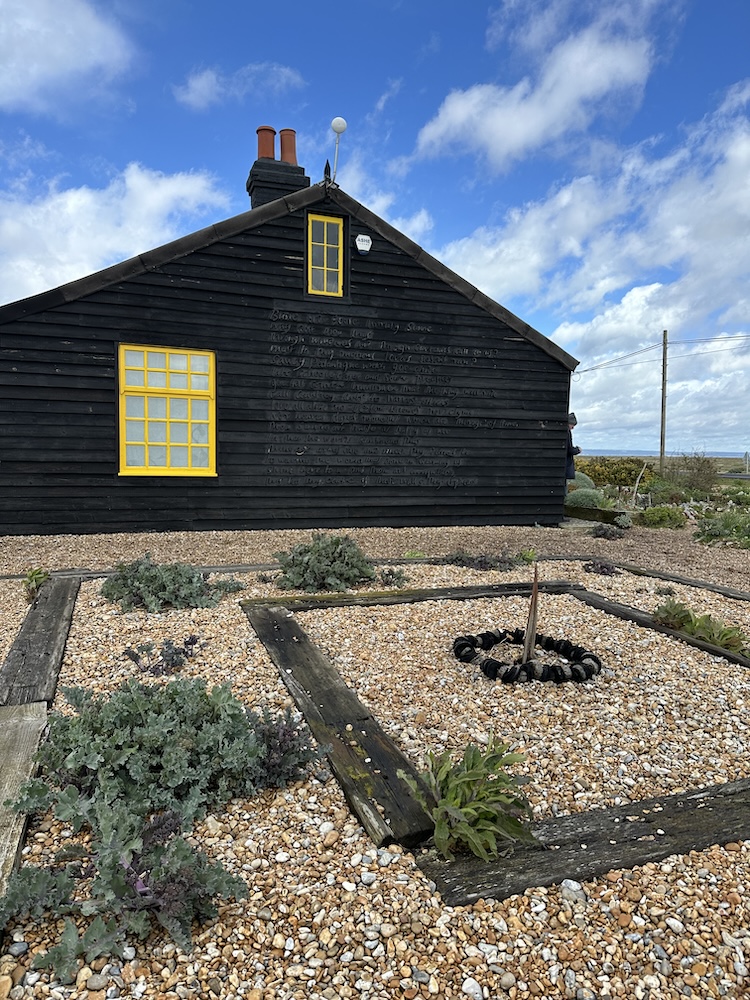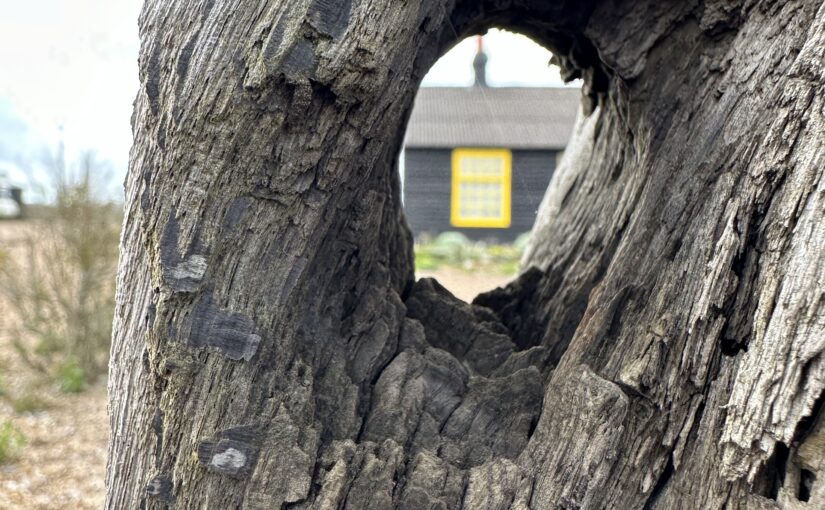It was a wet, extremely windy day when we decided to drive to find Prospect Cottage. Prospect Cottage is a turn of the century fisherman’s hut which sits on the shingle at Dungeness. It is easy to find on the road to the lighthouses and power station with its black walls and yellow paintwork. Getting out of the car however was a battle against the strong wind and it took two of us to open the drivers door. The bad weather did however mean we were the only visitors looking around the cottage.
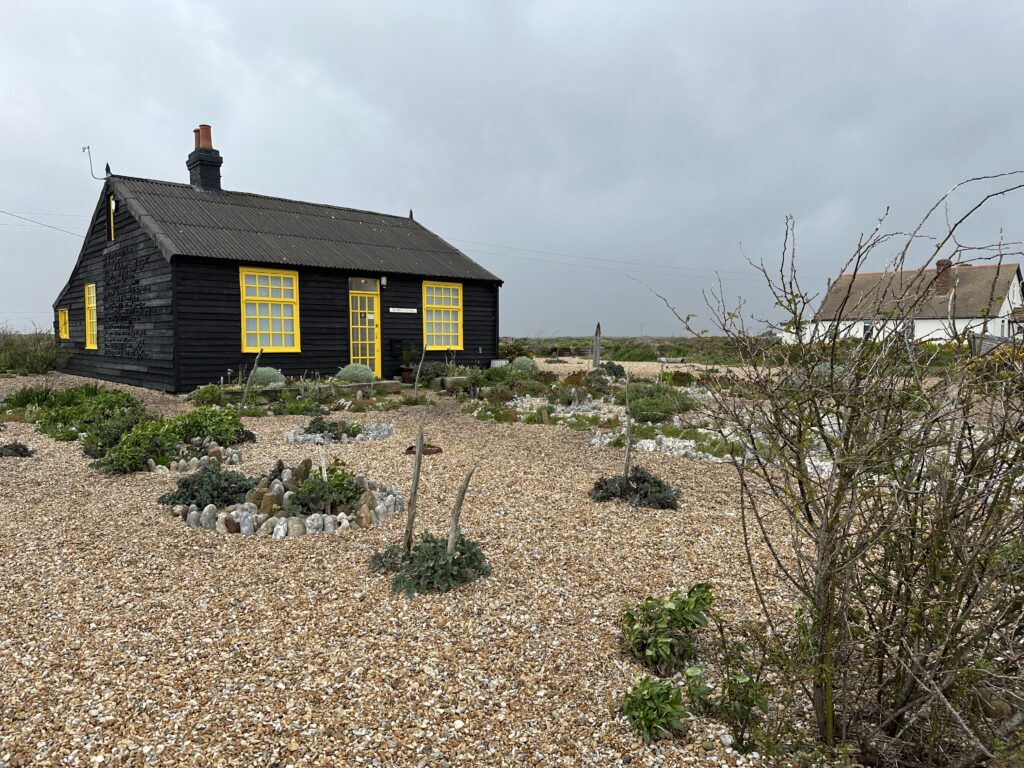
Derek Jarman moved to Prospect Cottage in 1986. The cottage soon became a source of inspiration to all who visited and a creative hub where his artistic practices and collaborators came together. Prospect Cottage was, and continues to be, a place that inspires artists, and creative minds of all varieties. By booking one of the limited places you can step-inside the cottage and soak up the atmosphere of this unique building.
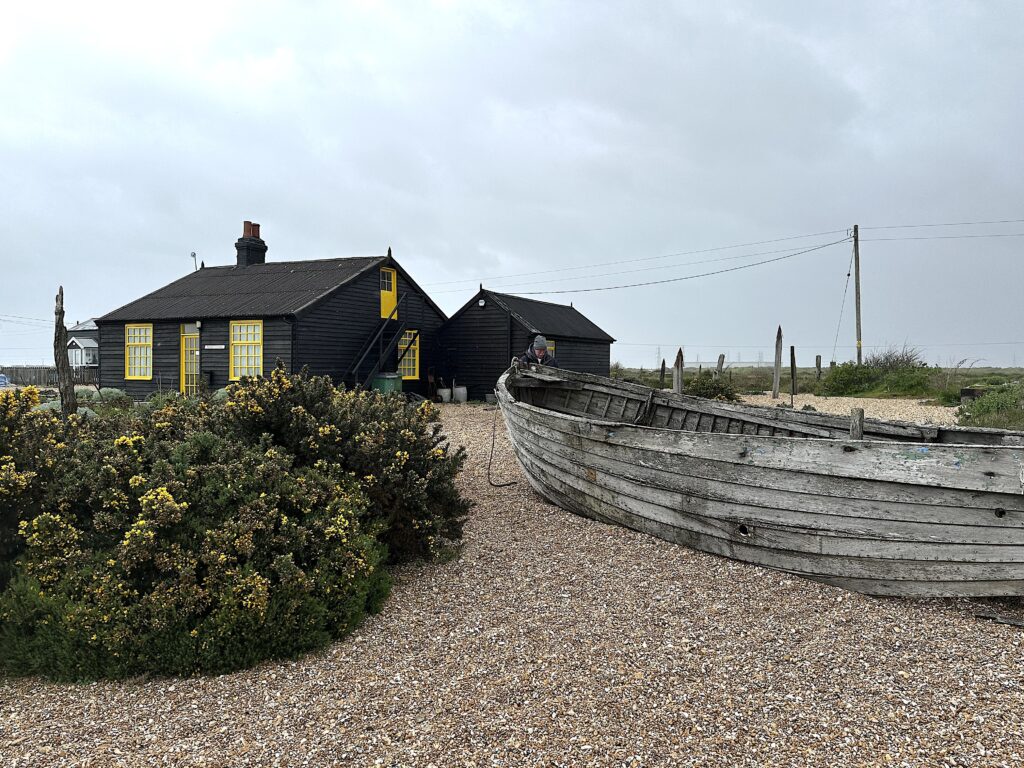
Who was Derek Jarman? Michael Derek Elworthy Jarman was an English artist, film maker, costume designer, stage designer, writer, poet, gardener, and gay rights activist. He was born in 1942 and died at 52 of an AIDS related illness. He made feature films, short films and music videos. He is credited in 55 films, including “Jubilee”, “Caravaggio”, and “Blue”.. To be honest I had not heard of him until I heard of his home Prospect Cottage near the power station at Dungeness.
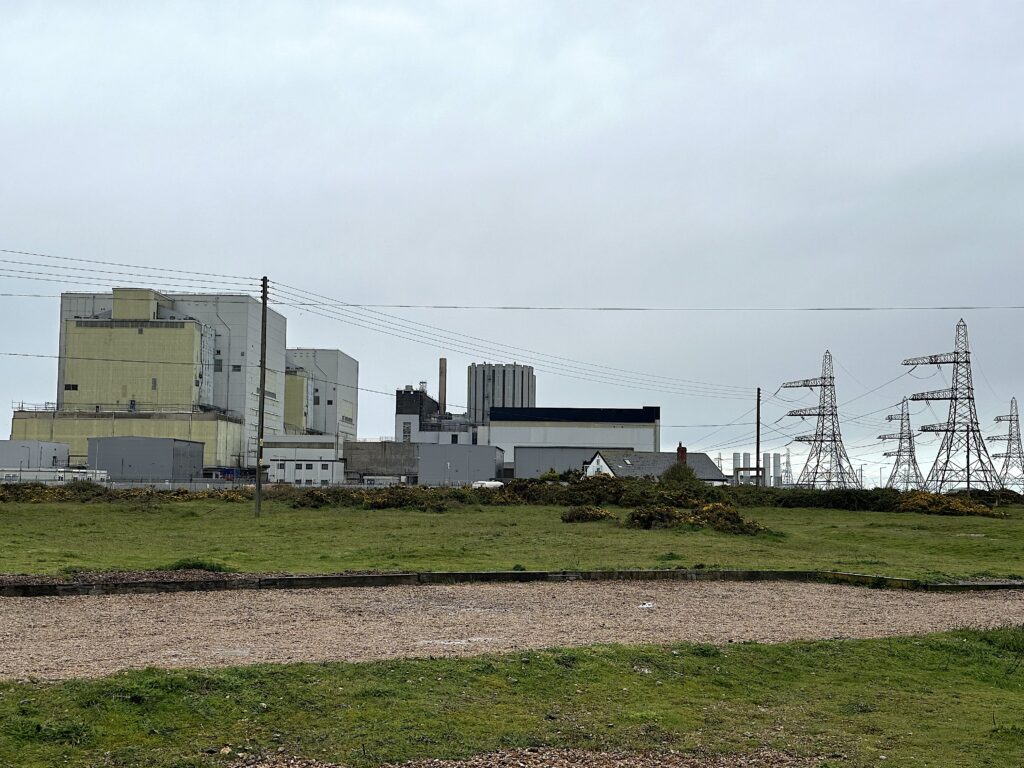
We were unable to look inside on the day we visited but as there was no-one around we looked through the windows. It was however the garden that I was most interested in. Those who have visited Dungeness will be familiar with the very un-English prospect of encountering private gardens without fences. Regulations in the protected nature reserve mean that fences are mostly forbidden, so property boundaries remain blurred. The weather conditions meant we were the only people about and once we were able to stand against the wind we could enjoy the area. It was April and so no poppies or roses.
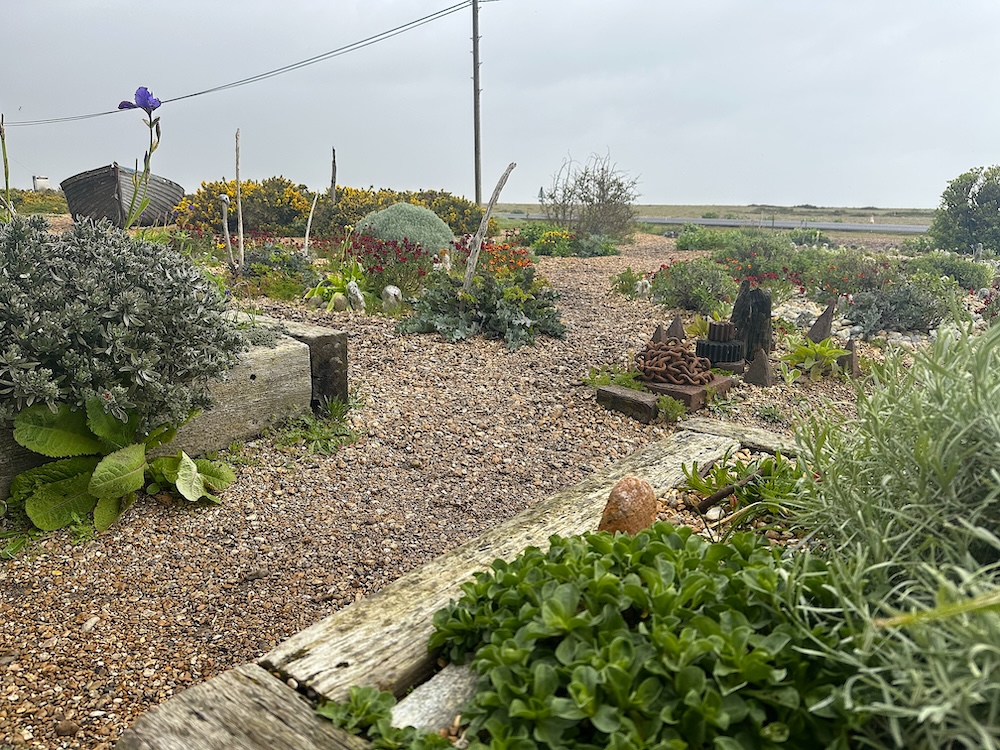
When Derek first moved to the cottage and started gardening he had hoped to surround himself with roses but most of the ones he planted could not cope with the exposed salty conditions. He turned instead to native plants – sea kale, wild peas, viper’s bugloss, teasels and sea holly. He used items he found on the beach and his neighbours were a little concerned that something occult was afoot. “People thought I was building a garden for magical purposes,” Jarman said at the time, “a white witch out to get the nuclear power station.” Driftwood totems now rise above shaggy tufts of sea kale, strings of pebbles dangle from rusting iron posts, and metal balls of fishing floats emerge from clumps of gorse.
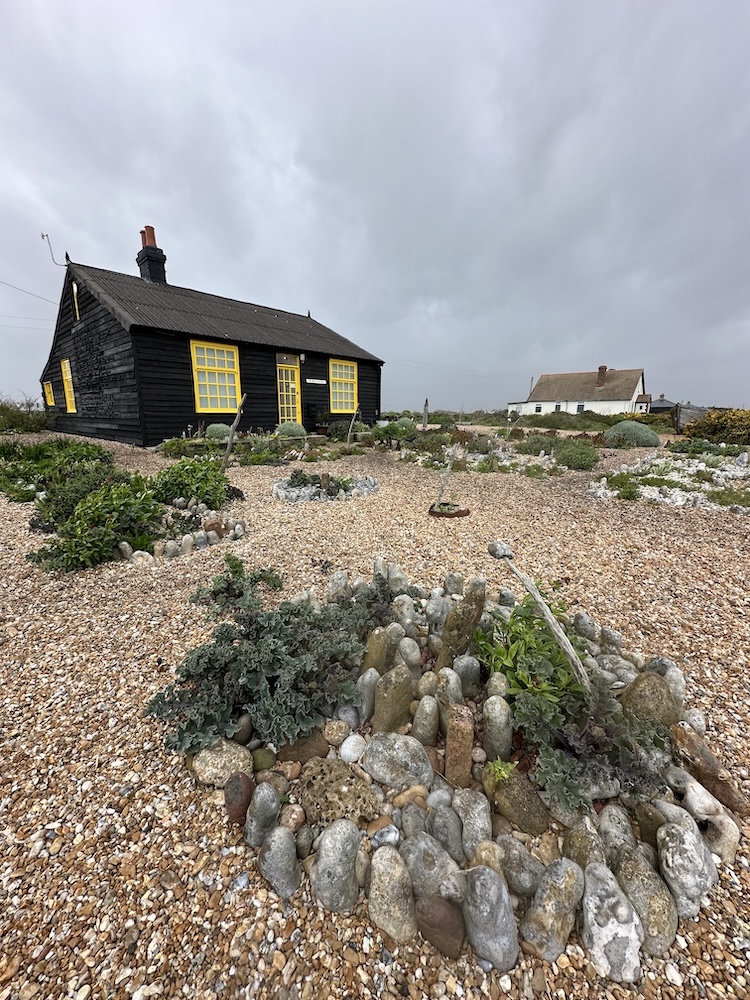
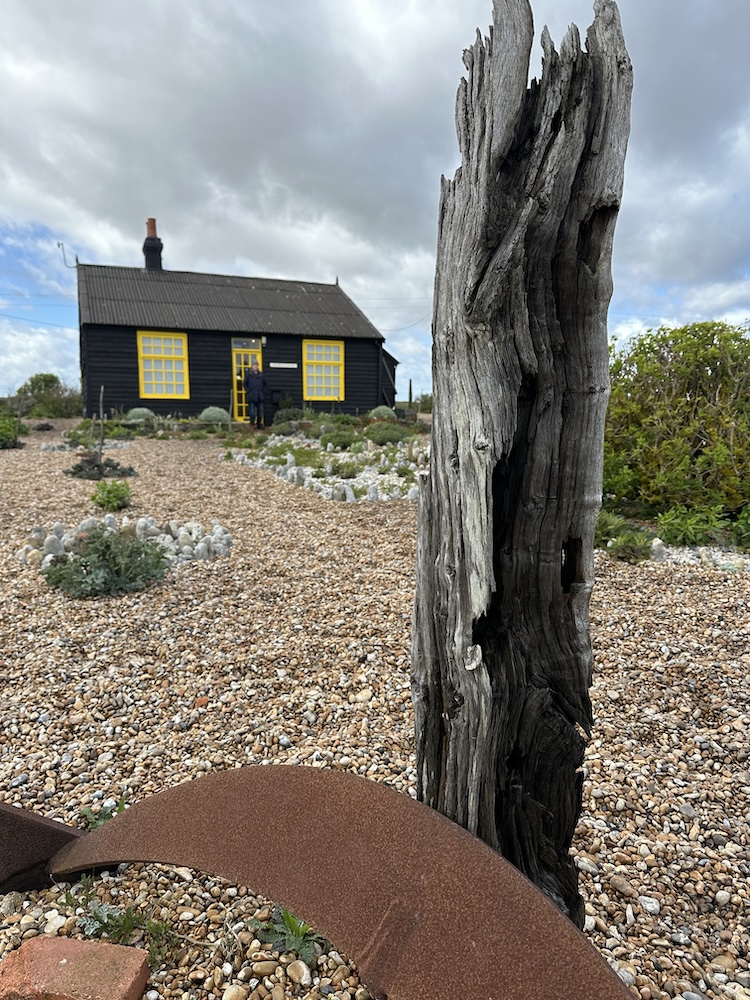
Dungeness is home to the world’s smallest passenger railway as well as the largest shingle beach in Europe, and it’s a haven for wildlife and over 600 species of plants a third of all the plants found in the UK. Dungeness is host to many insect species. It is one of the best places in Britain to find insects such as moths, bees, beetles, and spiders.

